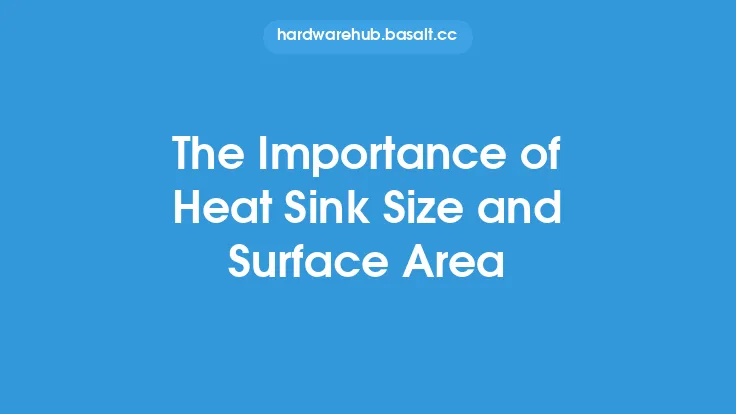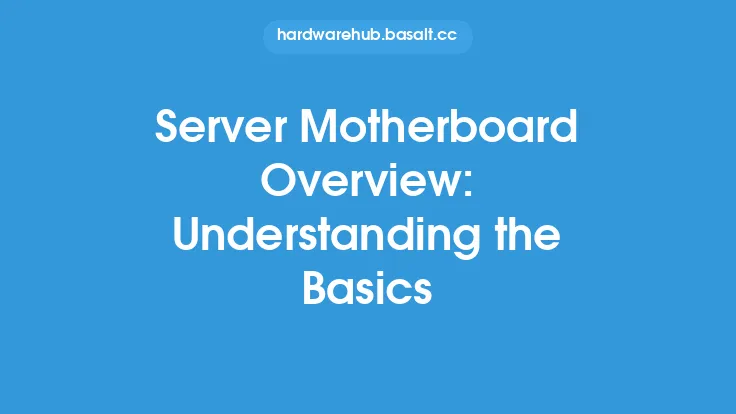Heat sinks are critical components in cooling systems, and their performance is crucial for the reliable operation of electronic devices. To ensure that heat sinks meet the required standards, various organizations and regulatory bodies have established specifications and certifications. Understanding these standards and certifications is essential for manufacturers, designers, and users of heat sinks to guarantee optimal performance, safety, and compliance with regulatory requirements.
Introduction to Heat Sink Standards
Heat sink standards are guidelines that outline the requirements for the design, manufacture, and testing of heat sinks. These standards cover various aspects, including thermal performance, mechanical integrity, and safety. The most widely recognized standards for heat sinks are developed by organizations such as the International Electrotechnical Commission (IEC), the American Society for Testing and Materials (ASTM), and the Institute of Electrical and Electronics Engineers (IEEE). These standards provide a framework for evaluating the performance and reliability of heat sinks, ensuring that they meet the necessary requirements for specific applications.
Certifications for Heat Sinks
Certifications are a way to verify that heat sinks comply with specific standards or regulations. Some of the notable certifications for heat sinks include:
- UL (Underwriters Laboratories) certification, which ensures that heat sinks meet safety standards for electrical and electronic equipment.
- CE (Conformité Européene) marking, which indicates that heat sinks comply with European Union directives and regulations.
- RoHS (Restriction of Hazardous Substances) compliance, which ensures that heat sinks do not contain hazardous substances such as lead, mercury, or cadmium.
- ISO (International Organization for Standardization) certification, which verifies that heat sinks meet international standards for quality, safety, and environmental management.
Thermal Performance Standards
Thermal performance standards for heat sinks are critical for ensuring that they can effectively dissipate heat from electronic devices. These standards typically cover aspects such as:
- Thermal resistance, which measures the ability of a heat sink to transfer heat from a source to a sink.
- Thermal conductivity, which measures the ability of a heat sink material to conduct heat.
- Heat transfer coefficient, which measures the rate of heat transfer between a heat sink and the surrounding environment.
Some of the notable thermal performance standards for heat sinks include ASTM D5470, which provides a test method for measuring the thermal resistance of heat sinks, and IEEE Std 1515, which provides a standard for the measurement of thermal performance of heat sinks.
Mechanical Integrity Standards
Mechanical integrity standards for heat sinks are essential for ensuring that they can withstand mechanical stresses and maintain their structural integrity. These standards typically cover aspects such as:
- Mechanical strength, which measures the ability of a heat sink to withstand mechanical loads and stresses.
- Vibration resistance, which measures the ability of a heat sink to withstand vibrations and shocks.
- Corrosion resistance, which measures the ability of a heat sink to withstand corrosion and degradation.
Some of the notable mechanical integrity standards for heat sinks include IEC 60068, which provides a standard for environmental testing, and ASTM B117, which provides a test method for measuring the corrosion resistance of heat sinks.
Safety Standards
Safety standards for heat sinks are critical for ensuring that they do not pose a risk to users or the environment. These standards typically cover aspects such as:
- Electrical safety, which measures the ability of a heat sink to prevent electrical shock or fire.
- Fire resistance, which measures the ability of a heat sink to withstand fire and prevent its spread.
- Toxicity, which measures the ability of a heat sink to prevent the release of toxic substances.
Some of the notable safety standards for heat sinks include UL 60950, which provides a standard for safety of information technology equipment, and IEC 60950, which provides a standard for safety of information technology equipment.
Environmental Standards
Environmental standards for heat sinks are essential for ensuring that they do not harm the environment or contribute to pollution. These standards typically cover aspects such as:
- RoHS compliance, which ensures that heat sinks do not contain hazardous substances.
- WEEE (Waste Electrical and Electronic Equipment) compliance, which ensures that heat sinks can be recycled or disposed of in an environmentally friendly manner.
- Energy efficiency, which measures the ability of a heat sink to minimize energy consumption and reduce its carbon footprint.
Some of the notable environmental standards for heat sinks include RoHS Directive 2011/65/EU, which provides a standard for restriction of hazardous substances, and WEEE Directive 2012/19/EU, which provides a standard for waste electrical and electronic equipment.
Conclusion
In conclusion, heat sink standards and certifications are essential for ensuring that heat sinks meet the required specifications and regulations. Understanding these standards and certifications is critical for manufacturers, designers, and users of heat sinks to guarantee optimal performance, safety, and compliance with regulatory requirements. By following these standards and certifications, heat sink manufacturers can ensure that their products meet the necessary requirements for specific applications, and users can have confidence in the performance and reliability of their heat sinks.





